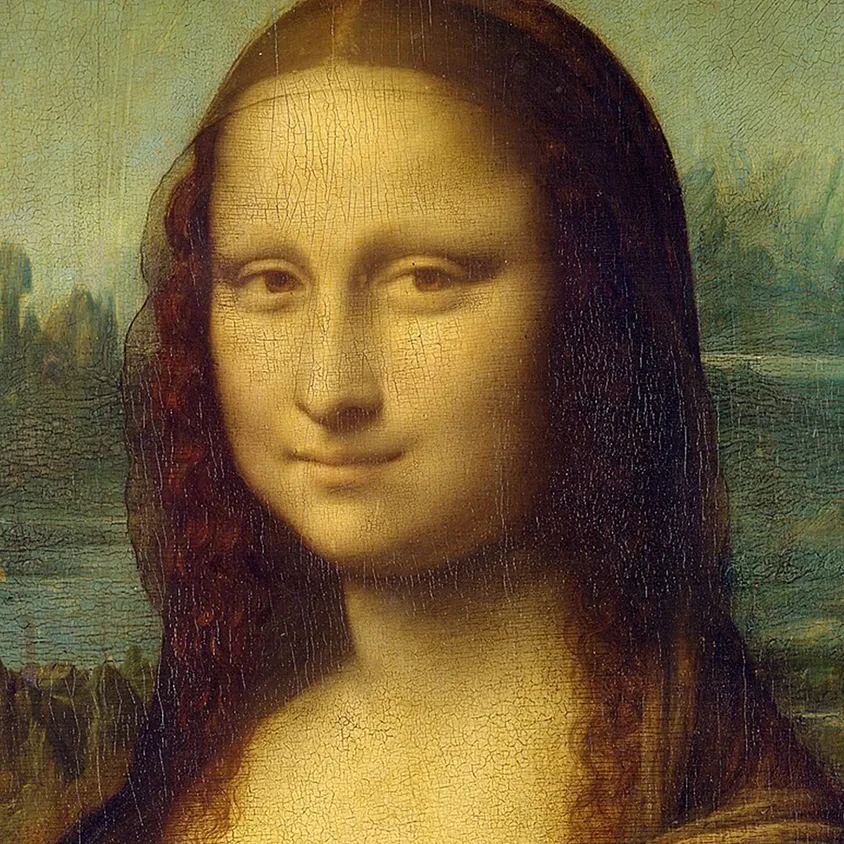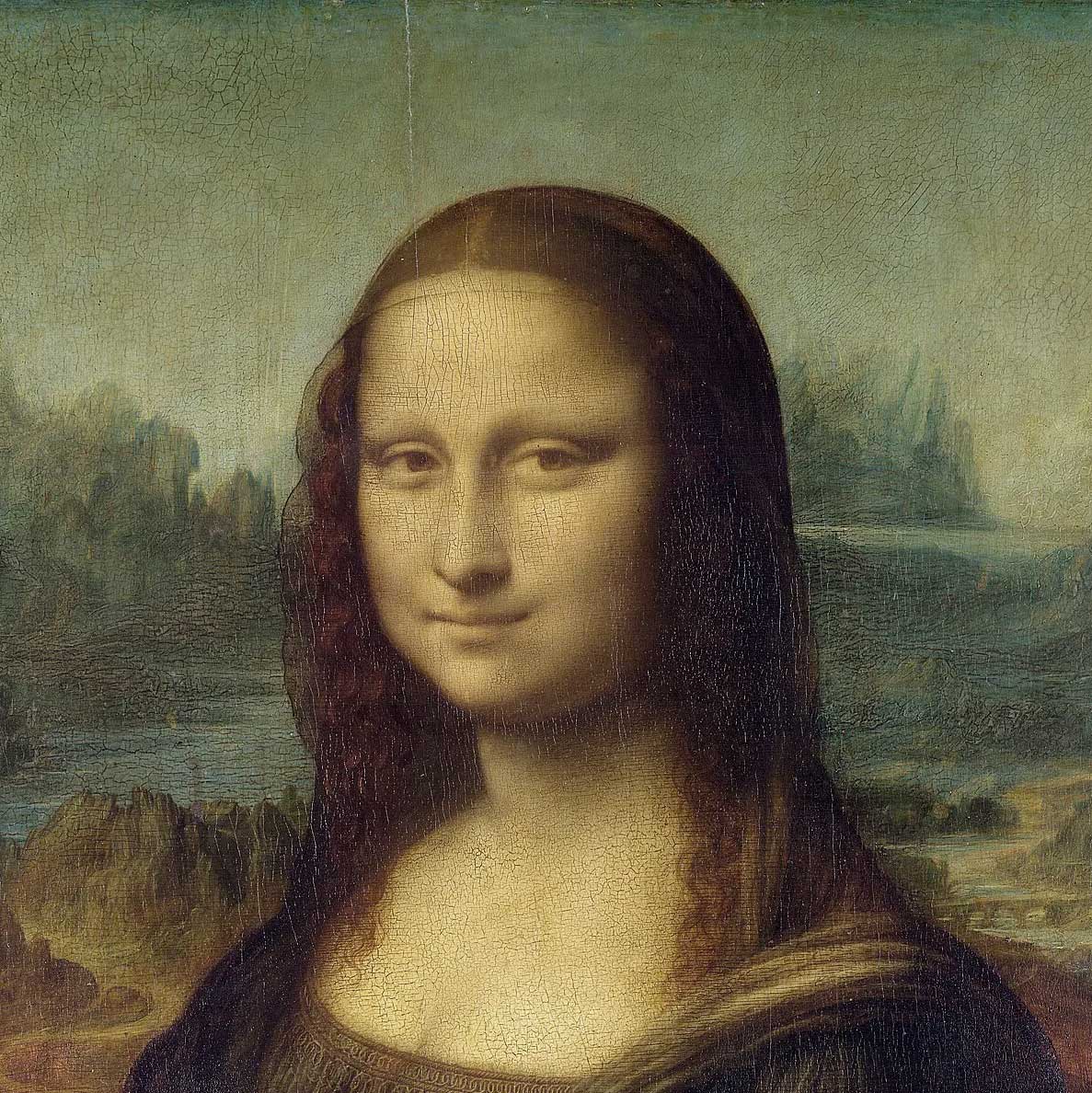I had the opportunity to visit Alex Righetto’s solo exhibition, in June this year, in Miami. Among the various paintings on the show, a poetic line connects the images displayed there: reflections that reveal the survival of art history in contemporary art.
Alex is clearly a scholar, and as an Italian artist, by birth and education, it’s no surprise that Italian Renaissance art is present in his artistic trajectory. Something very strong about this artist, and worth underlining, is that he does not intend to invent the wheel in the dictatorship of contemporary art, Righetto makes it clear where his references come from and clearly shows his intentions, who influenced him, which masters and which works are at the basis of his thinking, and also, he expresses his fascination with the history of art.
Among so many references, two are explicit: the Mona Lisa by Leonardo da Vinci, and The Birth of Venus, by Sandro Botticelli.
The Mona Lisa’s Daughter

The painting entitled “The Daughter of Mona Lisa” shows a woman who is sensually looking at the viewer, and at the same time with such innocence in her eyes. With an impeccable pictorial gesture and intentional visual deconstructions, the artist creates a fiction: what if Mona Lisa had a daughter? With this proposal, he conveys the image, and the “Monalisa myth”, to the contemporary, and presents us with a female figure that aligns with our time but is at the same timeless level.
Alex confers certain formal qualities to his painting, bringing elements that show us his previous studies: his Monalisa Daughter has the same position and expression appeal as the one of Leonardo’s; her shoulders are off balance too; while Righetto’s women usually have a delicate treatment in the painting, especially their faces, nuances of softly translucent tones and delicate touch, Monalisa’s Daughter shows strong brushstrokes, and let us know the gestures of the painter, as if undoing the mist that Leonardo created.
While the Renaissance master produced a mysterious environment that enrolled all the elements of his composition, some kind of mist that gave the whole painting a subtle and delicate nuance, and his landscape background in his Monalisa’s composition takes the viewer to other worlds, Alex Righetto placed his figure on a plain background, without any extra elements, forcing us to face the fiction proposed by him, without any possibility of distraction or escape, and even so, her hair is wrapped in gestural brushstrokes that outline the deconstruction of the color palette, almost suggesting a fading of the fiction itself. In this movement, the artist proposes an experience between work and public that borders on disappearance, as if by distracting ourselves, by refusing to face what the history of art has bequeathed us, we are running the risk of losing it: Monalisa’s daughter may also be disappearing in brushstrokes and gestures typical of the artist, which challenge our gaze to absorb the image before it escapes us.
Conceptually, Alex also proposed a challenge: to give visibility to this canvas that evokes nothing more than the most famous painting in the world. Challenge won by the artist by invoking essentially contemporary technologies, that is, Righetto does not deny his time, he proposes a folding of times. From April 21 to 27, 2023, Mona Lisa’s Daughter was displayed on two large digital screens in Times Square, New York. With this resource, the artist reached a gigantic audience in a short space of time, aligning his painting to the digital age, so fast and ephemeral that if we take a longer breath, we lose the thread. And wouldn’t this be a dialogue that is also present in the pictorial gestural fading of Alex’s fictional character, so established in history?
Rebirth of Venus

Another painting that struck me was a canvas that evokes Botticelli’s Birth of Venus. Alex once again deconstructs the environment, removes all metaphor and iconology from the composition, isolates the main character, and places her in a background that only because of the pearly tone falls on the aforementioned Venus. While Botticelli offers us a Venus that modestly hides, while she emerges from the waters on a shell, Righetto proposes a younger and less formal Venus, who faces us defiantly, not head-on like the Renaissance one, but with a tangential look, like if she was already leaving the scene, and something, or someone had caught her attention, then she suddenly turns and questions us. As in his Monalisa, the artist evokes the disappearance of the image through the marked gesture and fading of the hair, and in this case, also from part of the body: nothing but her young face remains. The bright tones of the strands of her hair suggest the passion of Botticelli by the blondes; the pearly of the fennel in Alex’s painting, brings the mother of pearl of the shell that Botticelli immortalized in his composition; while the black plane that covers the body of Righetto’s figure contrasts strongly with the nudity that the Renaissance artist dared to expose. Alex brings the history, but he does not rest on it.

We perceive qualities in Alex Righetto that place him on a different level, he shows himself to be a thoughtful researcher, both in terms of making and technique, with formal pictorial elements that captivate his audience, an intentional color palette that reveals his line of investigation, as well as gestures, from the softest and most subtle, to the most explicit and quickest, depending on the message Alex wants to leave. The artist does not shy away from showing how much he studies and to whom he owes his references, we clearly see a researcher who dives into history in order to learn and apprehend, both conceptually and technically.
But don’t expect the message to be literal or easily done, the images to be given with the story ready. Alex invites us, as an audience, to dive in, explore and scrutinize, reflect, and enjoy, and that’s the only way we can really get to know his work.
Luciane R. N. Garcez
Professor at the University of the State of Santa Catarina – UDESC -, Florianopolis, Brazil.
Independent art critic, curator, and artist.
Ph.D in Art History, Université Aix-Marseille, France.
Post-doctoral research at UDESC, Brazil.
Link for Lattes CV: https://lattes.cnpq.br/8041551261651027
E-mail: lucianegarcez@gmail.com
@lucianegarcezartes
www.viajarnahistoriadaarte.com



